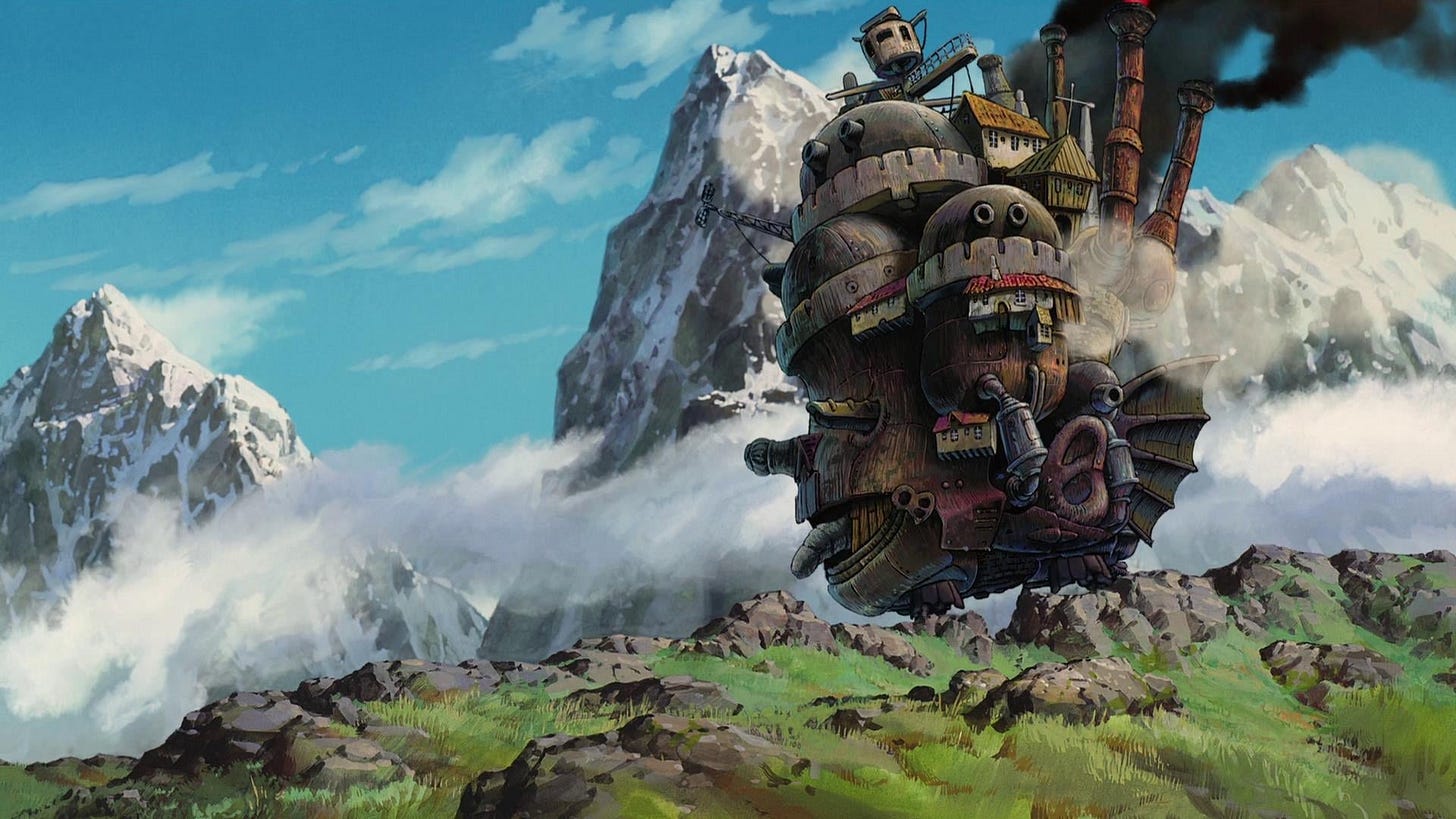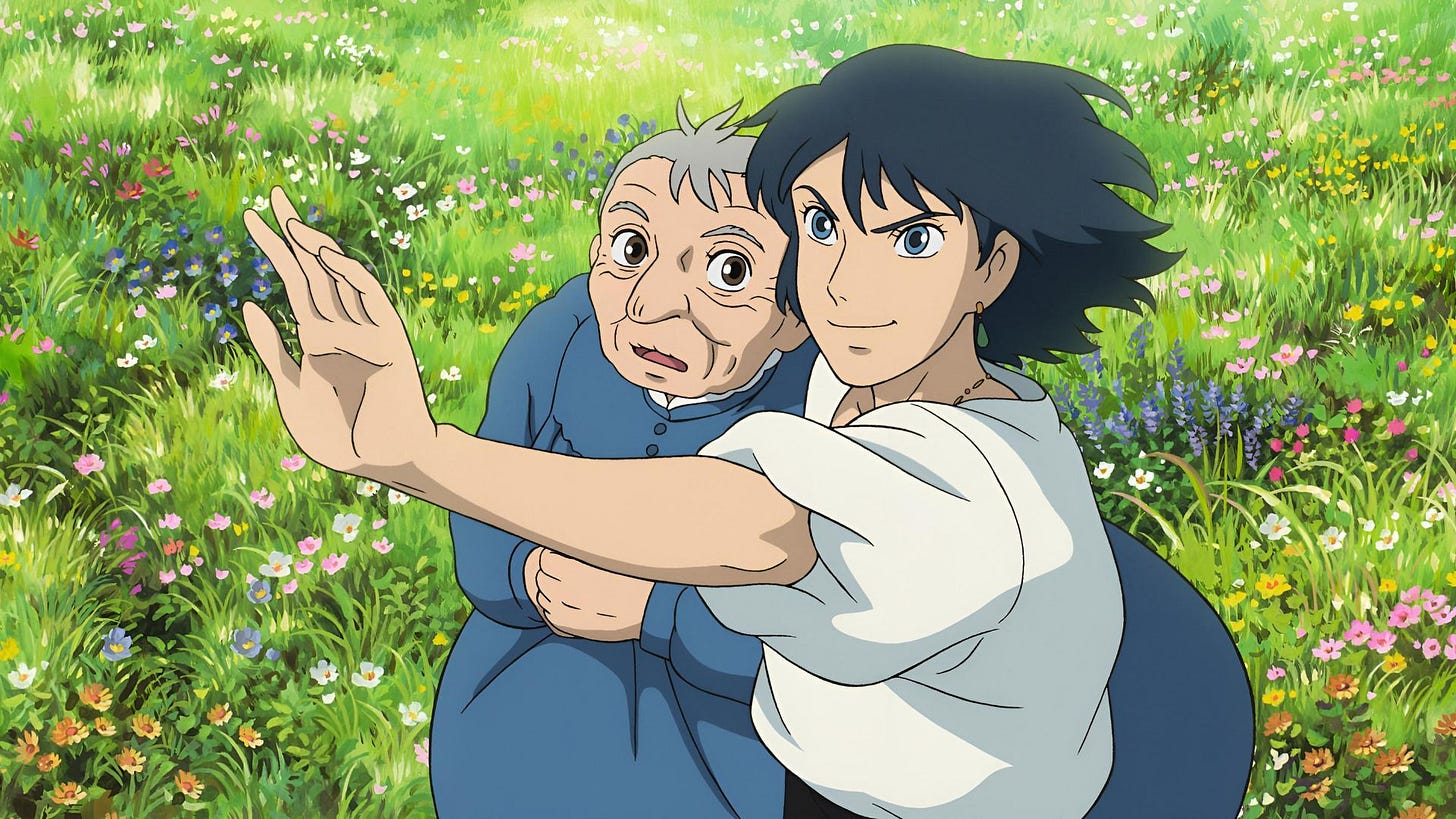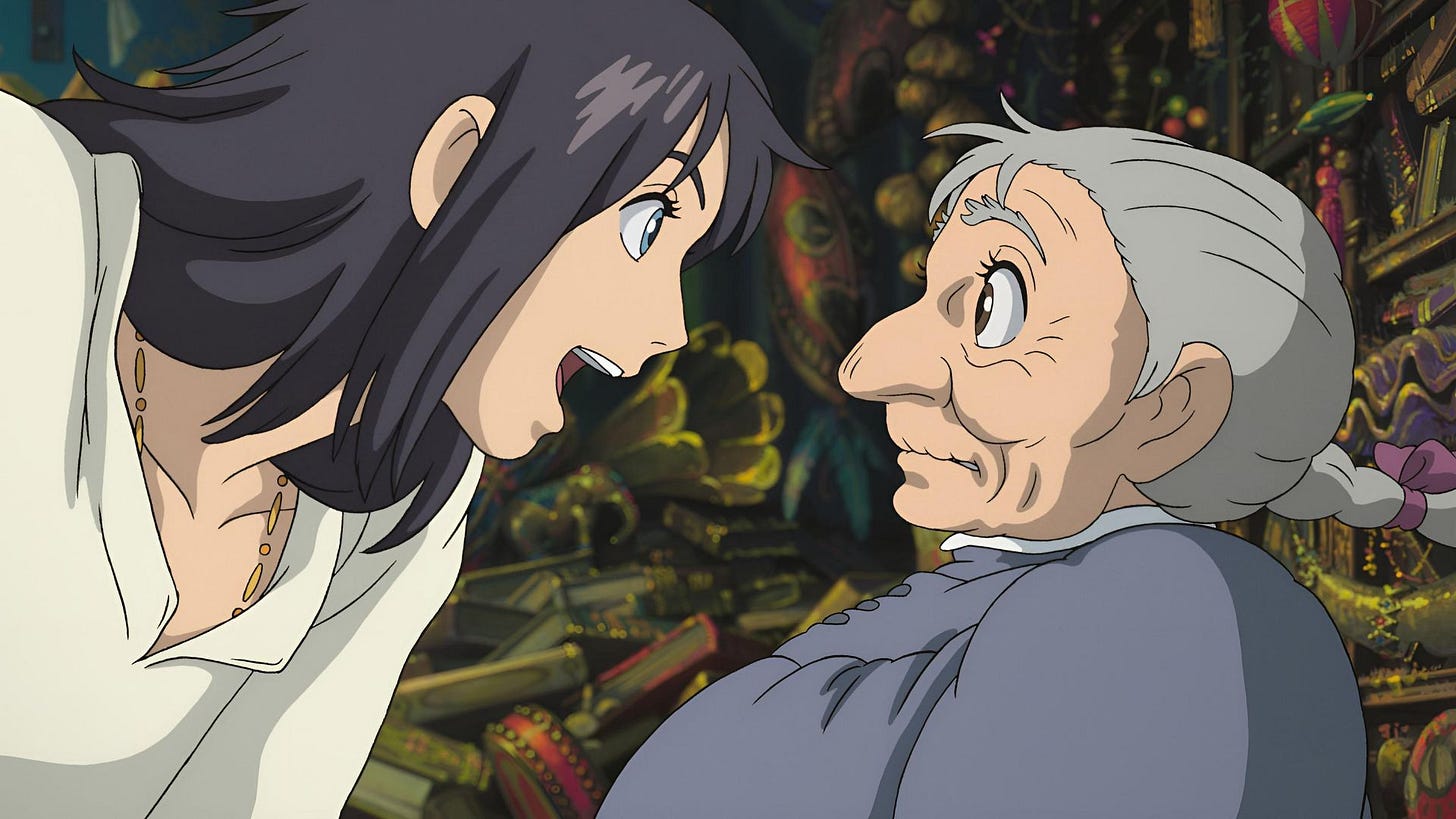Watching a Ghibli Movie for the First Time…
My interpretation and reaction to watching Howl's Moving Castle and drawing parallels with A Court of Thorns and Roses by Sarah J Maas.
It was the fall of 2019 when I first watched an animated film popularly categorized under ‘anime’, a term as new to me as the onset of COVID-19 was to everyone. Alas, it did not manage to take over me, as breathtaking as it was, the way the pandemic took over the world for a long couple years. The movie was Kimi no Na Wa / Your Name.
My then boyfriend in the spring of 2020 decided to make me watch The Tale of Princess Kaguya / Kaguya-hime no Monogatari during a total nation-wide lockdown as an attempt for me to join this massive cult. He'd expected me to dive headfirst into a daze of watching all the most popular anime works, in vain. At the time, I was oblivious of its classical status of being a Studio Ghibli movie. And, surprising as it may be, I couldn't find myself getting through the first minute of it. I watched a cozy American Romcom that night instead.
All this to say, my time hadn't come. In hindsight, I now see why taking a chance on serendipity and diverting from my usual genre and form of entertainment didn't work. Suffice to say, anime is the art that only hits you all the way when you reach a certain phase in life. It only catches you in a certain ‘right’ moment and 2019 hadn't been that moment. But the fall of 2023 may as well begin to mark it for me.
I just watched my first Studio Ghibli movie, Howl’s Moving Castle, and I say this with every fiber of my being, I surrender.
I surrender to the allure of the magic that is anime, that puts a bullet through your chest while you lift your injured arm to aim the end of the barrel towards your heart, ready to be shot again. (Maybe a bit subtler than that).
I couldn't have prepared myself for this.
Howl's Moving Castle made me feel all the joys and shed all the happy tears for all the nuances of being a flawed human.
It felt like a personal attack on me, the way it picked out the threads of my insecurities. But it also weaved a cozy knit blanket out of it, offering my heart some much needed warmth and comfort. I guess that's the magic of Studio Ghibli (or so I've heard).
What triggered me to watch Howl's Moving Castle? The ACOTAR fandom.
To risk quoting Jane Austen, it is a truth universally acknowledged, that Sarah J Maas listened to Ghibli movie soundtracks while writing A Court of Thorns and Roses, the celebrated series that took the bookstagram by a storm after more than a decade of this Ghibli movie’s release. I wouldn't be surprised if she took inspiration from Howl while developing her most beloved character Rhysand, the High Lord of the Night Court.
The sudden rush of blood to my head when I first heard, “There you are, sweetheart. Sorry I'm late. I was looking everywhere for you”, had me take a liking to Howl almost instantly. The fact that Rhys, just like Howl, had chosen nearly those very words to introduce himself in Feyre’s life was not lost on me. Not to mention Howl's use of magic similar to mind control in his first scene to drive away those awful soldiers tormenting poor Sophie. And his mesmerizing blue eyes. His ability to fly (albeit without wings). His strikingly handsome looks and of course, his misplaced vanity.
And while the audience first knew Howl as a blondie, I’m sure most would agree his natural black hair later in the film better suited his beautiful features than the dye.


What made me write this blog? Lately, I've been feeling this overwhelming need to voice my opinion, but not too publicly. Hence a blog and not a wild rambling on Instagram stories.
And I read a few blogs about the themes of Howl's Moving Castle to know if anyone on the planet shared my thoughts. I found none to describe what I'd been feeling after having watched it.
The common sentiment is that this movie deals with the themes of aging and the allure of perceived beauty.
I say, Howl's Moving Castle is about manifestation of a strong will.
As it begins, we come across a timid, unconfident Sophie who doesn't feel assured of her own beauty or worthiness. Having encountered a serial womanizer rumored to ‘eat beautiful women's hearts’, she feels surprised that the great wizard Howl would pay her any mind. Having an uncommonly beautiful and popular-among-men sister at the bakery only further cements her insecurities with regards to her appearance. So, when a wicked witch curses her to becoming an old crone, it doesn't really dishearten her already defeated spirit by much. And while a healthy dose of shock and panic ensues, we see Sophie adjust to her new mortifying reality fairly easily.
But mind you, do not mistake her inferior sense of self for a lack of will to find her way through any obstacle.
Off she goes to the Folding Valley in search of a cure, stumbling across the titular castle in the Wastes, finding a friend in a curious scarecrow on the way. The imagery is obvious in that an old hag with gray hair and wrinkled skin finds a companion in a frightening scarecrow unwittingly. ‘Like calls to like’, as Sarah J Maas often likes to say.
But becoming an old lady has also made Sophie a wiser being, one more comfortable in her own skin. And while Howl can't stop fussing over his perfect hair (and perfect looks, the source of his misplaced vanity), he is also wholly unbothered by Sophie's ill-favored appearance. Accepted into the household as a cleaning lady, Sophie's snarky yet amiable countenance and newfound grit wins her a friend in Markl, a little wizard-in-the-making, and Calcifer, the fire demon whose life is tied to Howl's.
This movie skillfully transmits its message of valuing kindness and the beauty within, with clear examples found in Sophie cheering on the witch climbing the steps (yes, the one who cursed her), and her taking in the said witch and another enemy witch’s spy-pet in her tow later on. Help is provided whenever asked for. But what it does better, in my opinion, is that it correctly characterizes one person's sheer intent that could help translate their thoughts into reality.
A very visual representation of the idea is found in the scenes where Grandma Sophie unconsciously turns back into her physically younger self when she shows religious conviction in her feelings or an unwavering resolve in getting what she wants. She momentarily breaks her own curse, not needing a knight in shining armor (or a handsome wizard who can turn into a giant bird) to kiss her. Grandma Sophie is now a force to reckon with.
Further proof to that is when Sophie returns back to her old, wrinkled self when that determination and confidence falters, restoring the curse. Intrinsically, the age of her thoughts (or rather, the wisdom of it) and her changing sense of self momentarily revitalize her soul, mirroring in the transformation of her appearance. And it becomes evident that the only thing standing between her way has been her own limiting self-beliefs regarding her beauty and purpose in life, all along.
On the other hand, when Sophie pours water over Calcifer, essentially killing it, both Calcifer and Howl survive as Sophie somehow inadvertently wills it into existence.
That makes one wonder, is she a witch too? 👀 Or has it just been her sheer tenacity?
The movie does not clear that cloud (although the book does).
But I see it clear as day. It's all by manifestation of wishful thinking, backed by unrelenting grit. My take on the film is that it visually portrays how having a strength of character can open many doors for a person, if one has the patience for it.

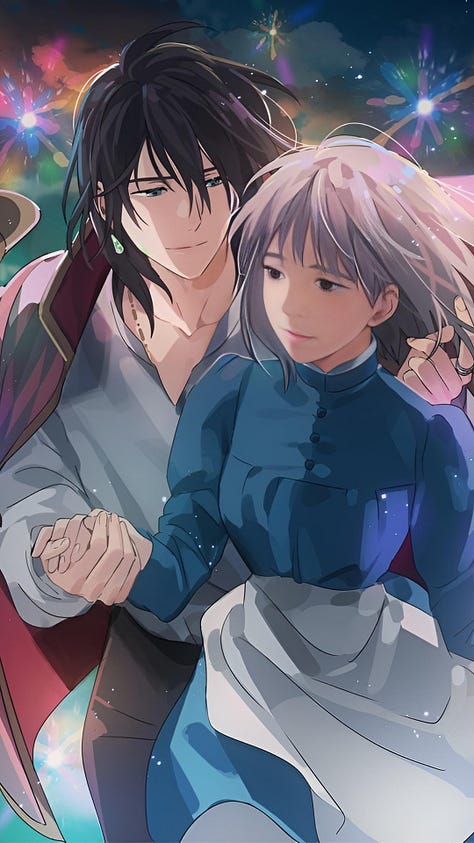
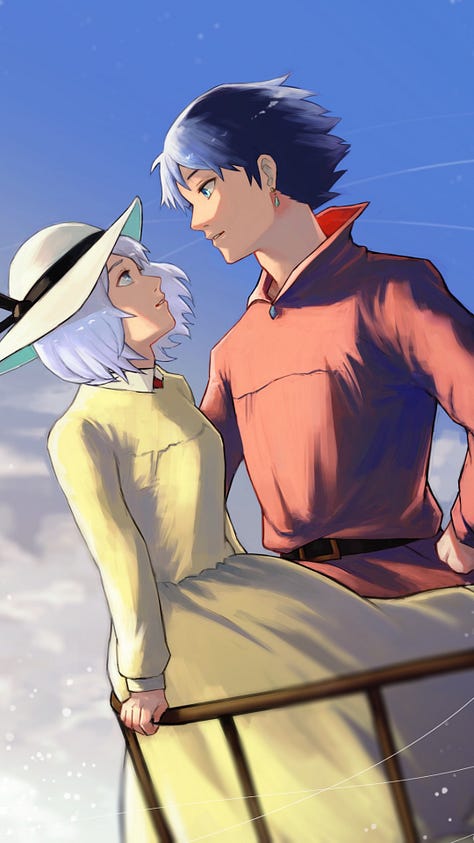
This is further affixed by the fact that the sound of bones popping and being in a state of constant fatigue doesn't derail Sophie from traveling all the way to the Wastes in her newly aged body, while later on, she also manages to travel back in time solely out of her single-minded desire to break Howl's curse.
But that's not all. We also see this in Howl. Due to his curse slowly chipping away on his humanity, we often see Howl not being able to transform back from his beast self to his humanoid form. However, after having admitted his true feelings for Sophie, a hope blossoming in the hollow of his heart (literally), he manages to find his way back to his humanity rather easily, after having saved Sophie and his ‘family’ from the enemy-witch and her battleships.
Sophie's transformation from a meek absent woman to an indomitable force of nature was brilliantly depicted. Visually so, with the final breaking of her curse but with her hair still gray. A true representation of the growth of wisdom and an acceptance of herself.
However, Howl's transformation from an uncaring selfish beast to an ardent lover (and a family man 👀 change my mind, lol) has my whole heart.
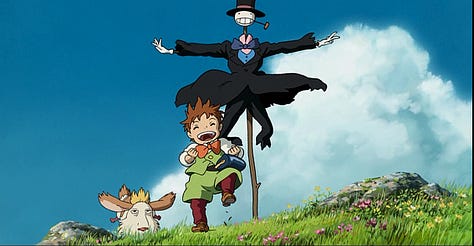
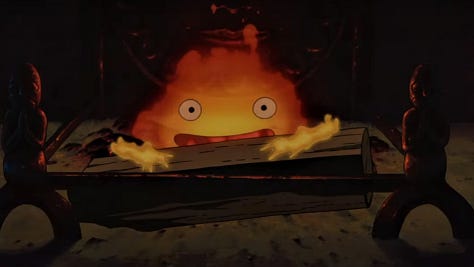

And while there are many more themes to dissect and many more characters to love (hello, turnip head!), the ones I talked about above had the engines of my mind whirring the most.
Suffice to say, Howl's Moving Castle has been a balm of a movie to soothe old wounds from deeply buried insecurities and a cue for us to walk along the path of uncharted territories with the same amount of mettle that Sophie showed. As the movie seems to say without actually saying (and without being a cliche, of course): when one door closes, another one opens.





